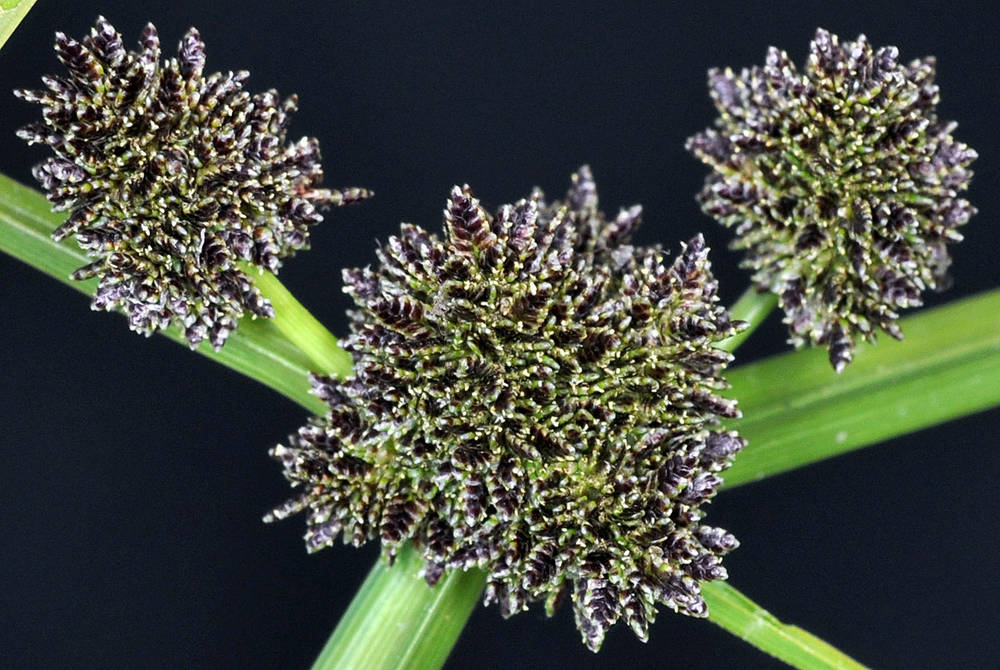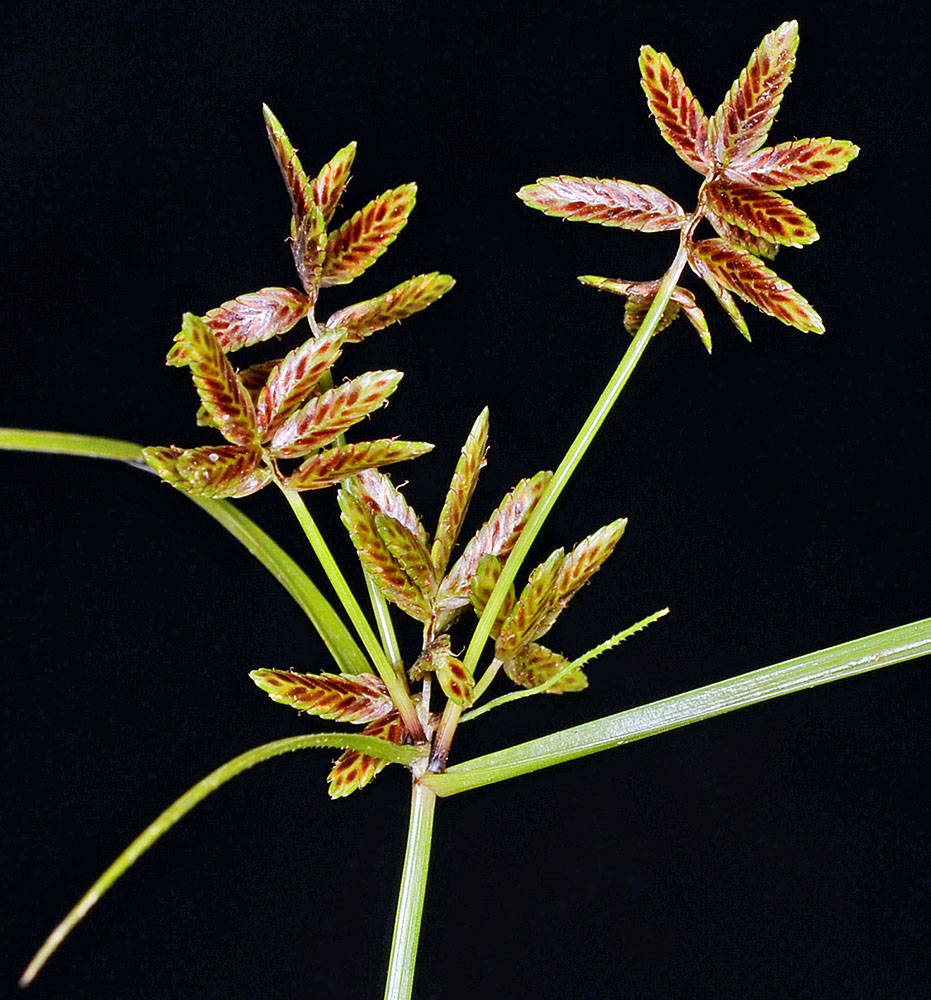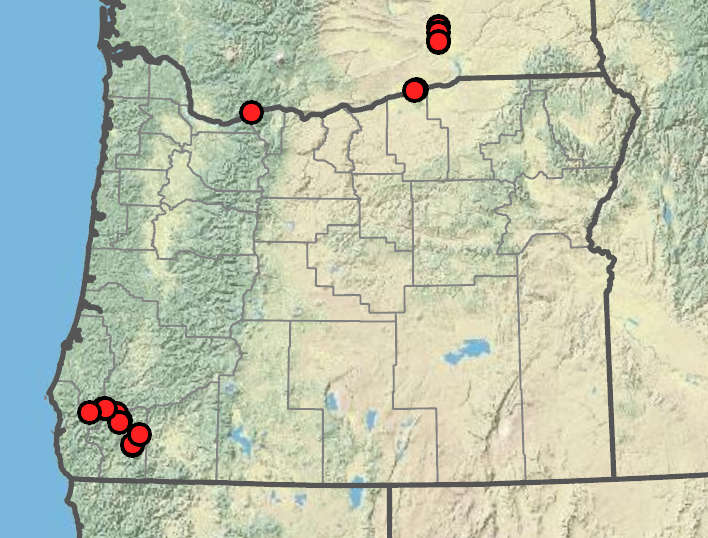Cyperus difformis
Cyperus bipartitus
Asian flatsedge
shining flatsedge
1–15, trigonous, 7–30 cm × 1.2–2.5 mm; soft (flattened in pressing).
roundly trigonous, 3–25(30) cm × 0.3–1.4 mm.
(2)7–22 cm × 2.2–4 mm.
1–8 cm × 1–2 mm.
clusters head-like; dense, 7–17(35) mm wide;
rays (0)1–5, 2–32 mm; longest inflorescence bract erect or nearly so, appearing as continuation of culm; other bracts horizontal to ascending.
cluster head-like, 1, loosely ovoid, compressed, 7–14 × 9–14 mm;
rays 1–4; to 2(3) cm;
inflorescence bracts 2–3; horizontal to ascending at 45(75)°.
30–120, oblong-ellipsoid, compressed; (2)3–5(6) × 0.8–1.2 mm; greenish brown to purplish brown; floral scales (6)12–20(30), obovate to orbiculate, 0.6–0.8 × 0.6–0.8 mm, stramineous to deep purple with clear margins; mid-stripe greenish, stramineous, or purplish;
lateral ribs 0; medial ribs 3;
apex mucronulate.
3–5(8), flattened, oblong to oblong-lanceoloid, 8–18 × 2–2.6(3) mm; floral scales (6)10–26(32), closely overlapping, 1.9–2.7 × 1.8–2.3 mm, oblong to ovate; light to dark brown, with light brown mid-stripe;
lateral ribs 0; medial ribs 2–3, 2-keeled;
apex obtuse.
anthers 0.1 mm;
styles 0.1 mm;
stigmas 0.1–0.3 mm.
anthers 0.4–0.5 mm;
styles 0.6–1 mm;
stigmas 1–1.5 mm.
obovoid-ellipsoid, 0.6–0.8 × 0.3–0.4 mm (as long as subtending scale);
base cuneate.
with network of ridges forming isodiametric or square cells, obovoid to ovoid, 1–1.3(1.5) × (0.6)0.8 mm.
Cyperus difformis
Cyperus bipartitus
Disturbed, sandy or muddy soils, sand bars, roadsides, sometimes on serpentine. 100–400 m. Sisk. CA, ID; east to NJ, south to Mexico; South America; Africa, Australia, Eurasia, islands of the Pacific and Indian Oceans; Exotic.
Cyperus difformis is recognized by its tight heads of small spikes with unusually small scales. The first Oregon collection was made in 2004.
Shorelines exposed by seasonal low water levels, ditches, disturbed wetlands. 0–800 m. Col, CR, Sisk, WV. CA, ID, NV, WA; northeastern Canada, most of US, south to South America. Native.
Cyperus bipartitus closely resembles C. niger, a taller rhizomatous perennial with clustered shoots that are often collected without the rhizomes.
Barbara Wilson, Richard Brainerd, Nick Otting
Barbara Wilson, Richard Brainerd, Nick Otting
- Local floras:
CA,
OR,
WA
- Local Web sites:
CalFlora,
CalPhotos,
Flora NW,
PNW Herbaria
WildflowerSearch
iNaturalist (observations)
USDA Plants Database
- LBJ Wildflower Center
- SEINet
- Plants of the World Online
- Encyclopedia of Life
- Wikipedia
- Google Image Search





